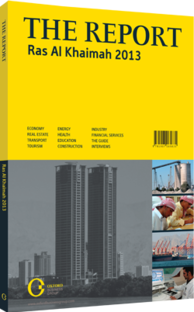Competitive edge: Stronger infrastructure expected to support growth
All of Ras Al Khaimah’s key economic drivers require access to up-to-date infrastructure in order to remain competitive. The government has recognised this need and, with support from the federal authorities, has invested in establishing a strong base to support tourism and industry growth in the years ahead. The emirate benefits from both its own transport links, in the form of its international airport and five ports (including the largest bulk port in the Middle East), as well as its proximity to neighbouring Dubai, which is a major hub for air travel and maritime transport.
Ports
RAK’s Saqr Port, which has a capacity of 350,000 twenty-foot equivalent units, serves bulk producers like the emirate’s cement companies and quarries. RAK Maritime City is a free trade zone that complements the services at Saqr Port, offering companies a business-friendly free zone with access to global shipping facilities. Al Jazeera Port provides dry-docking and shiprepair facilities. The port features 12 dry berths with total lifting capacity of 1100 tonnes. RAK Khor Port, located in RAK City, was built to cater to the tourism sector, with facilities to berth modern passenger and cruise ships. The Al Jeer Port is the newest such facility in RAK. The port is located at the border with Oman and has a 266-berth marina for yachts and private luxury craft, and also handles cargo and livestock.
On The Road
The government invested in extending the Sheikh Mohammed bin Zayed Road from Sharjah to RAK in 2005. This reduced travel times from RAK City to Dubai to under an hour. More recently, the federal government has invested in improving the local road network, with the aim of adding 300 km of paved roads by end-2013. One of the bigger phases of the project is the construction of the RAK Ring Road. The 32-km highway will cost Dh398m ($108m) and help connect Sheikh Mohammed bin Zayed Road to major industrial areas, including the free zones, quarries and seaports.
Change In The Air
RAK International Airport is almost exclusively devoted to passenger traffic. It is currently developing an expansion strategy to cater to increasing passenger flows and to better support tourism. The airport appears to be growing into a regional lower-cost alternative to Dubai and Abu Dhabi. The number of arrivals has grown from 23,200 in 2010 to 200,200 in 2012. Expansion plans include developing facilities at the cargo terminal, while the government is investing $27m to upgrade the 3.75-km runway and raise passenger capacity from 500,000 to 2m by 2015.
Local airline RAK Airways has carved out a niche serving tourists and expatriate workers travelling to and from the UAE from countries like India, Pakistan and Bangladesh, although it intends to expand beyond this. In July 2013, the carrier announced plans to increase its fleet size and extend service to 40 new destinations by 2015, and in August it launched new routes to Amman and Islamabad.
Adding Rail
RAK will also benefit from plans for a national railway network. The project is currently nearing completion of Phase I, which is entirely in Abu Dhabi.
Phase II will connect Dubai and Phase III will link RAK and the Northern Emirates. The network is being designed to cater to both passenger and freight traffic. Etihad Rail, the firm spearheading the project, expects to have the capacity to carry 50m tonnes of freight and 16m passengers annually.
Power & Water
Finally, RAK is investing in expanding electricity and water networks to cater to rising demand from industry and residential developments.
It is currently constructing a water desalination station that will increase RAK’s water production capacity by 15m gallons of water a day. The plant is being built to support industrial developments near RAK’s quarries.
It is also investing Dh1.5bn ($408m) to build a 270-MW coal-fired power plant by 2015 that will utilise energyefficient carbon capture technology.
RAK’s government has demonstrated a commitment to supporting long-term growth with infrastructure spending. The full impact of better road, rail and sea networks will be difficult to quantify but they are likely to be a critical catalyst for private sector investment.
You have reached the limit of premium articles you can view for free.
Choose from the options below to purchase print or digital editions of our Reports. You can also purchase a website subscription giving you unlimited access to all of our Reports online for 12 months.
If you have already purchased this Report or have a website subscription, please login to continue.

